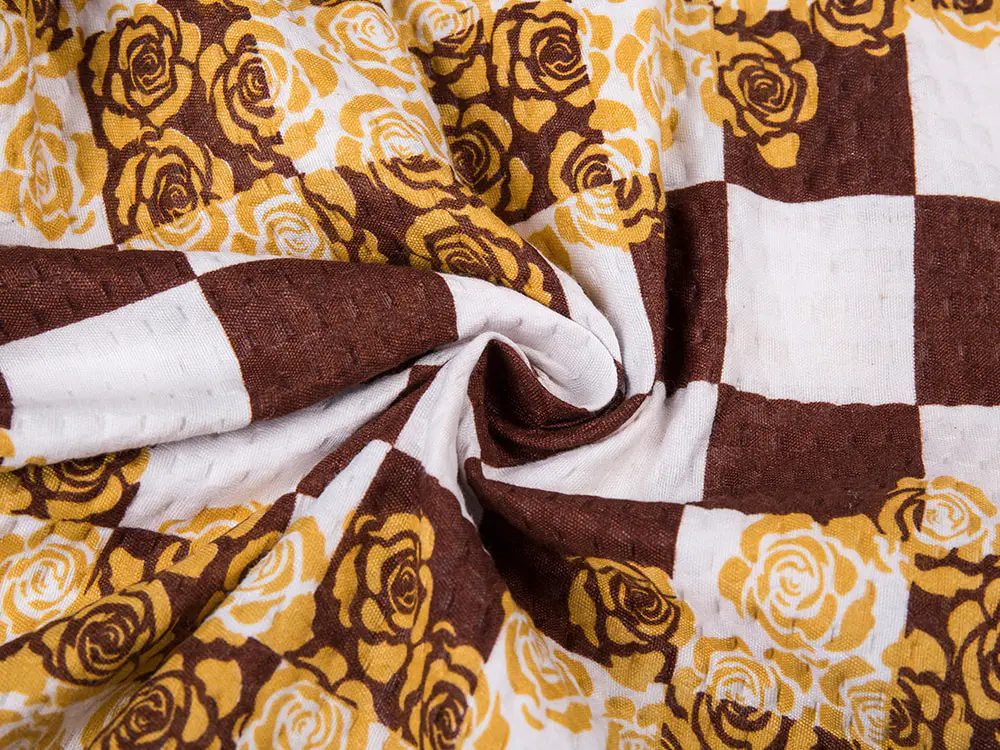In the textile industry, the
Embossing Bubble Process is a commonly used technology to enhance the surface texture of polyester fabrics, giving them unique textures and visual effects. However, ensuring the quality and stability of polyester fabrics in this process requires strict control of the entire production process.
1. Raw material selection and preparation
The quality of polyester fabric first depends on the quality of the raw materials. Therefore, when choosing polyester fiber, you should ensure that the fiber has high purity, high tensile strength, and good wear resistance. At the same time, the raw materials are subjected to strict pre-treatment, such as cleaning, drying and screening, to remove impurities and bad fibers to ensure the uniformity and consistency of the raw materials.
2. Weaving process control
Weaving process control is a key link to ensure the quality and stability of polyester fabrics in the
Embossing Bubble Process. This link covers the entire process from fiber preparation to fabric formation, and is crucial to improving the uniformity of fabric structure, appearance and physical properties. First, process preparation is crucial. Before weaving begins, the loom needs to be carefully inspected and adjusted to ensure it is in optimal working condition. This includes checking key components such as the loom’s tension system, warp let-off system, and take-up system to ensure they can accurately control the tension, speed and position of the yarn. At the same time, according to the characteristics of polyester fiber, appropriate yarn count, density and twist are selected to optimize the structure and performance of the fabric. During the weaving process, various process parameters must be strictly controlled. These parameters include warp and weft yarn tension, warp let-off amount, take-up amount, loom speed, etc. By accurately adjusting these parameters, it is possible to ensure that the yarns maintain a stable interweaving state during the weaving process and avoid quality problems such as yarn skipping and yarn breakage. At the same time, according to the design requirements of the fabric, the shedding time and beating intensity of the loom are reasonably adjusted to ensure that the density and texture of the fabric achieve the desired results. Quality control during the weaving process is also essential. This includes regular testing of fabric appearance quality, dimensional stability and physical properties. By using advanced testing equipment and instruments, problems that arise during the weaving process can be discovered and solved in a timely manner, ensuring that the quality of the fabric is stable and reliable.
3. Optimization of embossed bubble process
The embossed bubble process is a key link in improving the quality of polyester fabrics. During the process, a suitable embossing mold should be selected to ensure the accuracy and durability of the mold. At the same time, adjust the embossing temperature and pressure to achieve the ideal embossing effect. In addition, attention should be paid to controlling the embossing speed and cooling time to avoid fabric deformation or quality degradation caused by too fast or too slow.
4. Quality control and testing
Strict quality control measures should be implemented throughout the entire production process. This includes raw material inspection, weaving process monitoring, embossing effect evaluation, and finished product testing. By using advanced testing equipment and instruments, the physical properties, chemical properties and appearance quality of the fabrics are comprehensively tested to ensure that the products meet quality standards.
5. Influence and Control of Environmental Factors
Environmental factors also have a significant impact on the quality and stability of
polyester fabrics. During the production process, the stability of workshop temperature, humidity and cleanliness should be ensured. Temperature that is too high or too low may affect the performance and embossing effect of the fabric; excessive humidity may cause moisture absorption and deformation of the fabric; and insufficient workshop cleanliness may introduce impurities and contaminants. Therefore, it is necessary to regularly clean the workshop, maintain equipment, and control environmental parameters within an appropriate range.
6. Employee training and operating specifications
Employees are a key factor in ensuring the quality and stability of polyester fabrics. Therefore, employees should be regularly trained in skills and quality awareness education to make them proficient in production skills and quality standards. At the same time, detailed operating specifications are formulated to clarify the operating requirements and precautions for each link to ensure that employees can operate in accordance with the specifications.
7. Continuous improvement and innovation
With the continuous advancement of technology and changes in market demand, the Embossing Bubble Process is also constantly developing and improving. Changxing Shiyue Textile Technology Co., Ltd. will maintain keen market insight, pay attention to industry trends and technological innovation, and timely introduce new technologies, new equipment and new materials to continuously improve the quality and stability of polyester fabrics.

